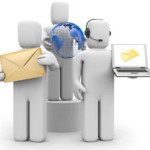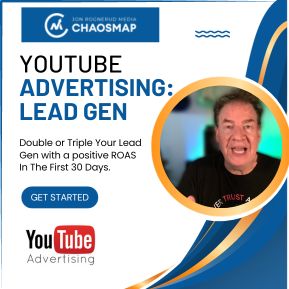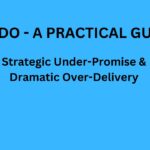Email that is received without consent is spam.
Email that tries to push blatant sales messages and hard-core pitches is just bad practice. Email lists that are not vetted even impacts the senders, and their server infrastructure.
Result: Email gets a bad rap in the marketplaces and everybody is affected at varying degrees.
We are not covering list quality and building in this post, but rather – the very important content creation and conversion tips. This will help you drive more business from your existing list, and you can start today.
We are covering principles that will work for existing lists, memberships and new subscribers.
We have seen open rates improve based on simple changes. Not everything has to, or should be tested all at once. For example, just making a change in the subject line can be a great start.
The idea of bringing your personality to each broadcast is an important one. However, that’s not all. Let’s cover some of the email marketing strategies you can use to model for your own.
In the recent email marketing benchmark report from MarketingSherpa – we learned content creation and email strategy is one of the hardest aspects for business owners to deal with.
Email copywriting can be overwhelming for most. Testing is also imperative.
And, a simple rule to begin – ask: what is my objective with the email, and am I targeting the right audience? (that means also segmenting your list, without ‘blasting’ everybody.)
The ultimate goal is serve your audience, while driving more leads.
Things to consider for smarter email marketing:
1. Tone of copy
Testing the various subject lines and copy to see what pulls better is one of the smart tasks you must do.
A direct-response tone is valuable to test (harder-sell), but a more helpful tone (useful, customer-based) where you reduce anxiety, and build a more “friendly” tone should also be tested. In a recent study from MarketingSherpa, the “customer-centric” messaging created a lift of over 300% in one of the cases.
The sales tone speaks to benefits and value, but the customer-service tone wins out, almost every time. The idea then, is to NOT convince the customer/client to buy on the first go-around. A softer approach, serving them instead, and let them make the right and best decision on their own.
They must understand and accept to a series of a logical steps… that eventually leads to a conclusion, whatever it may be. If you have an email provider that can track the behavior, you can put them on a different list or track. Behavior tracking allows your message to ‘speak’ more intelligently to them.
2. Subject line
This is key to get your target audience to open the email and to start engaging with the copy.
Are you starting with a positive, engaging message? Or, is it bland, boring – and serves them little value?
You need the point, then the value, and enough reason to open it. They read subject lines to delete emails, they already have a ‘negative’ mindset. If the email is from somebody they don’t know – they will delete. With the email overwhelm, you can see how it’s hard to stand out – and on a regular basis.
The subject line has to capture you, and significant enough that it’s hard to pass up. Attention and Interest is key in the subject line. Copywriters use the AIDA formula – time to revisit that (click the AIDA formula graphic below.)
Finally, put the most important part of the sentence in the front. For example – start with the main point: “Free Trial: …”

3. Body content
The subject line creates a ‘lead-in’ to the copy, and that the reader feels like reading the next line, paragraph and so on. A strong headline in the email body copy is important to support the subject line. (This optionally ties in to a targeted landing page later in the sequence.)
The formats, widths (think mobile readers), and use of images and breaks in the pages can be tested. But overall, don’t make it “boring” (corporate-speak). If you use images, it must support the content, and not just become ‘placeholders’. The reader should be motivated by your copy and imagery.
The conversions will fall off the more stale (not useful) it gets. And, keep thinking about the word “YOU” (not we, us). It’s about the customer, client or patient – always. Incidentally, headlines with the word “Get” in the front have often received the highest response from tests.
And, the headlines should not be long and use complex words. (Even if your industry ‘assumes’ it.) Finally – any images should be clear – are they supportive for the content, or are they clickable – and call-to-action (CTA) oriented? And yes, you need a strong CTA, to make the reader engage and move to your landing page. Breaking up the page is fine, but sentences and messages are important, not just a list of bullet-points. Make it easily readable, white space use, etc. Here are some smart designs that use whitespace layouts.
Who are they, what are they thinking, what do they need help with?
The psychology of your market and audience is important. The positioning of the content has to ‘match’. For example, in the professional legal field, “fear-based” messages and content can work better than inspirational ones. Some more research will need to be done.
Be present, stay personable.
Ultimately, a strong personal presence is important. People buy from people, not email messages.
The copy should be long enough to “sell the click”. This has to be tested. People scan the email first, top and bottom – then they decide if they should read it.
Long or short copy doesn’t matter – the testing of the click is key. Each thought should lead into the next, and be logically arranged. If you are sending to a known audience, you might be a little more aggressive with your headline and asking for the sale. Just beware of the language, and that you don’t get them defensive to your message.
Set up a ‘control’ email (your first email), and create variations to test against that control. We call this “beat the email control”.
P.S.
Final tip – combine your email marketing copy and content publishing with direct mail marketing strategies – and watch your sales leads increase from your awesome marketing and positioning.
Jon Rognerud and Chaosmap work with Fortune 500 companies, associations and entrepreneurs to create digital traffic strategies that scale up members, customers, leads and sales with profitable returns. Mr. Rognerud wrote a best-selling book (Buy On Amazon), “The Ultimate Guide To Optimizing Your Website” (Entrepreneur). Connect directly here.








